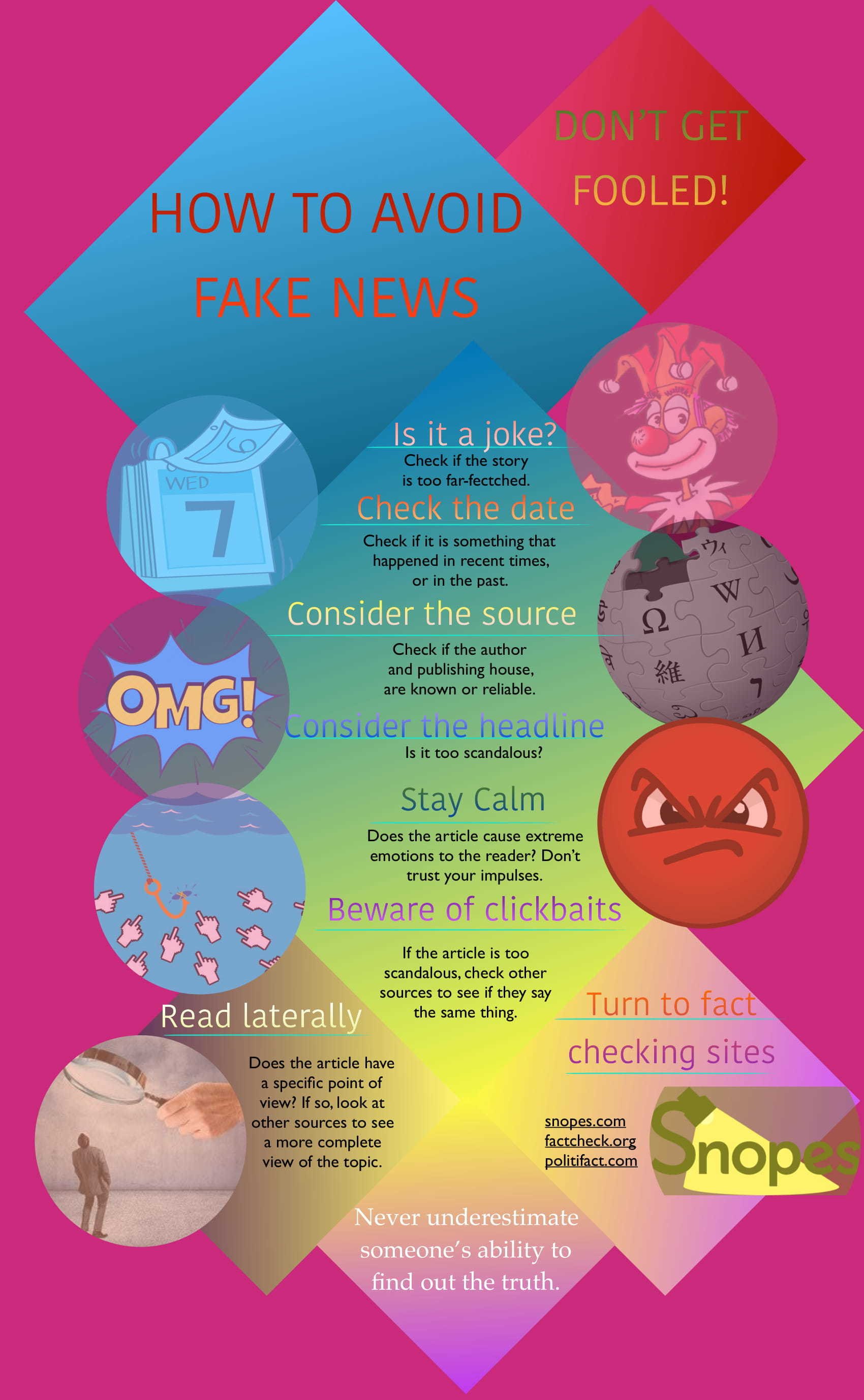Tips to avoid fake news.

Is information in social media always right? Is social media a reliable source of information? In this article people will learn how to know if the information in social media is true or false. Because on these days, it has been proven that some social media writers and bloggers say what suits them. When people choose to believe a story that has an altered truth, they tend to share this false belief with others. Experts believe that the spreading of fake news may be dangerous; for example, during an election campaign a rumor may be spread to discredit a candidate, and that could affect the outcome of the election, threatening true democracy. This a worldwide issue, because according to Centre for International Governance Innovation (CIGI), 86% of citizens have been exposed to fake news and 86% of them have reported that they initially believed that the news were real. This has been a problem for years, because media sometimes uses fake news to have more followers or to support a specific agenda and unfortunately some people believe what they say.
First of all, what are fake news? Fake news are a type of news consisting of deliberate disinformation in the media or in online social media. Basically it is misinformation. But how can people avoid falling on this trap?
Analyze

Well, the first thing they should do is analyze the page. They should see if it is a reliable source. If it isn’t a reliable one, they should do step 2.
Check title
In this step they need to read the title of the article. A common thing that happens in fake articles is that they have very striking and exaggerated titles. With this trick, they can attract people’s attention very easily.
Research
 In step 3, investigate on the internet. There are a lot of trustful sources on the internet that can help them solve any doubt. If they find out that many sources are talking about that event, it is probably real. But if only that source is telling that event, it is very probable that it is fake.
In step 3, investigate on the internet. There are a lot of trustful sources on the internet that can help them solve any doubt. If they find out that many sources are talking about that event, it is probably real. But if only that source is telling that event, it is very probable that it is fake.
Verify

Another way that people can find out if something is fake news, is to use special verification websites. A good example is the “snopes.com” website, which specializes in debunking fake stories. The only thing that needs to be done is to copy the link and in seconds it will be known if it is true.
Tell others

If someone knows that an article is fake, he should tell others. Everyone needs to help people know if they are being manipulated by social media. This could discourage the spread of fake news.
To recap, step 1 is to check if the page is reliable. Step 2 is to review the title of the article. Step 3 is to investigate the news on the internet. Step 4 is to check on verification websites like “snopes”. Step 5 is to tell others if it is real or fake.
If these steps are followed after reading an article, the chances of people being tricked by fake news and unethical writers will diminish exponentially. People shouldn’t let social media shape their minds. They should read, be informed, research and use their better judgment to protect themselves.
Fake news. (2020, February 1). Retrieved from https://en.m.wikipedia.org/wiki/Fake_news
